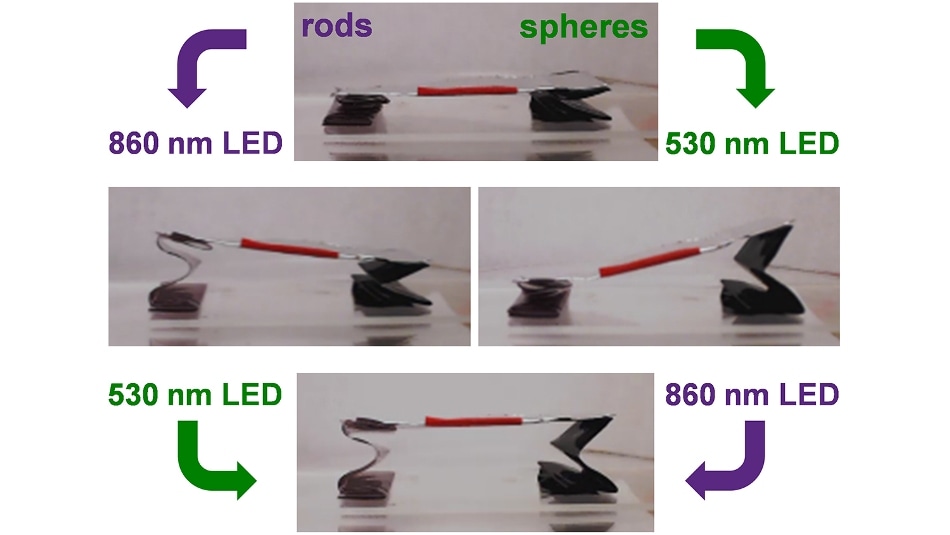Jun 21 2018
An innovative method which involves the use of gold nanoparticles to stimulate the sequential unfolding of three-dimensional structures with the help of different wavelengths of light has been devised by scientists at the North Carolina State University.
 A wavelength-controlled stage with accordion legs containing gold nanorods (left) and gold nanospheres (right). The sequence of illumination by light-emitting diodes (LEDs) positioned next to each leg (not shown in photographs) remotely controls the tilt angle and height of the stage. (Image credit: Sumeet Mishra)
A wavelength-controlled stage with accordion legs containing gold nanorods (left) and gold nanospheres (right). The sequence of illumination by light-emitting diodes (LEDs) positioned next to each leg (not shown in photographs) remotely controls the tilt angle and height of the stage. (Image credit: Sumeet Mishra)
Particularly, the method works on the basis that gold nanoparticles of different shapes convert different wavelengths of light into heat.
In this case, the team embedded gold nanorods and nanospheres into different areas of a shape memory polymer, which can then be folded into a desired shape. Upon exposure to light wavelengths of 530 nm (i.e. green light), the nanosphere-embedded regions unfold. Upon exposure to wavelengths of 860 nm (i.e. near infrared), the nanorod-embedded regions unfold.
This approach can be used at room temperature, and allows for significant flexibility, since you can control the wavelength that the material responds to by manipulating the shape of the gold nanoparticles.
Joe Tracy, an associate professor of materials science and engineering at NC State and corresponding author of a paper that describes the study
“This is an important advance because it directly connects the tunable optical properties of noble metal nanoparticles with remote triggering of sequential processes for applications in soft robotics, such as biomedical implants,” stated Tracy.
A related method devised at NC State to carry out sequential folding involves placing colored inks on one side of prestretched polymers, which then heat up and bend upon being exposed to different wavelengths of light.
The paper titled “Sequential Actuation of Shape-Memory Polymers through Wavelength-Selective Photothermal Heating of Gold Nanospheres and Nanorods” has been published in the Applied Nano Materials journal. Sumeet Mishra, a former PhD student at NC State, is the first author of the paper. The study was supported by the National Science Foundation under grant DMR-1056653, and by the Research Triangle MRSEC, which is funded by NSF grant DMR-121107.